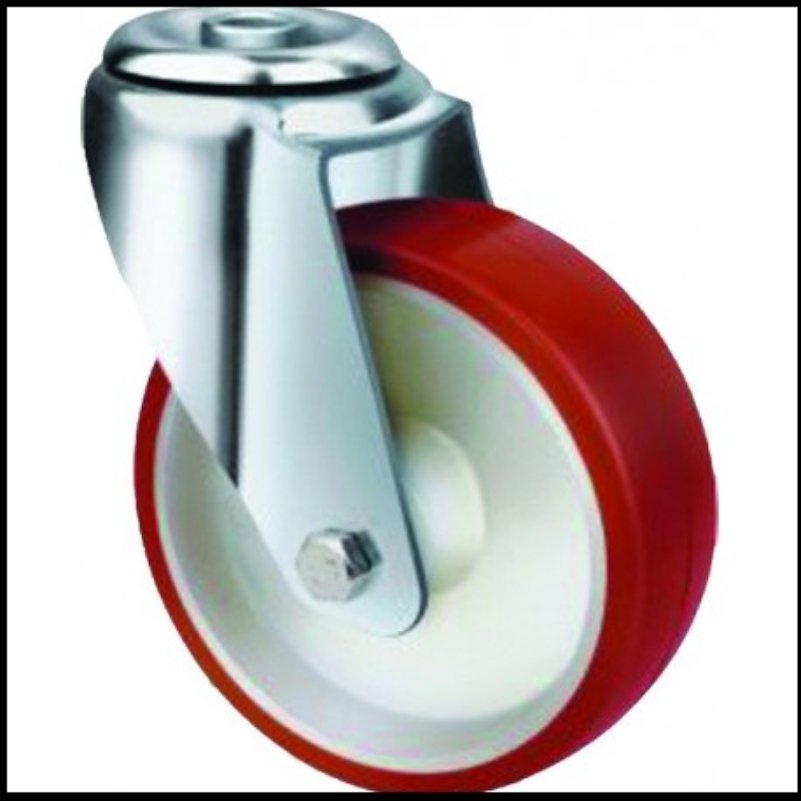In the world of material handling equipment, industrial castors are the unsung heroes that provide the backbone for efficient and safe transport of goods. These small but mighty components enable equipment like carts, racks, and dollies to move smoothly and effortlessly, making it easier for workers to move heavy loads with less effort. In this blog, we will explore the importance of industrial castor solutionsand the benefits they bring to material handling operations.
What are Industrial Castors?
Industrial castors are wheel assemblies that are attached to material handling equipment. They are designed to provide mobility and maneuverability, allowing equipment to move smoothly and easily across different surfaces. Castors come in a range of sizes and designs to accommodate various weight loads and operating conditions. The wheel itself can be made from a range of materials, including rubber, nylon, and polyurethane.
The Role of Industrial Castors in Material Handling
Industrial castors play a critical role in material handling operations, enabling workers to move goods quickly and safely from one location to another. They help to improve the efficiency of operations by reducing the amount of time and effort required to move heavy loads. This makes it easier for workers to transport goods across the warehouse or factory floor, helping to reduce fatigue and the risk of injury.
One of the primary benefits of industrial castors is their ability to provide smooth and effortless movement. Castors are designed to roll easily, allowing equipment to move with minimal resistance. This is especially important when dealing with heavy loads, as it can be challenging to move them manually without the aid of castors. Castors make it possible to move heavy loads with less effort, reducing the strain on workers and making the task safer and more efficient.
Another important benefit of industrial castors is their ability to improve maneuverability. Castors enable equipment to move in any direction, making it easier to navigate tight spaces and around obstacles. This is particularly useful in warehouses and factories where space is at a premium. By using equipment with castors, workers can move goods quickly and easily, even in confined spaces.
Types of Industrial Castors
There are several types of industrial castors available, each designed to suit different applications and environments. Here are some common types of industrial castors:
Swivel Castors: These are designed to rotate 360 degrees and offer a high degree of maneuverability. They are commonly used in applications where frequent changes of direction are required.
Fixed Castors: These castors are designed to move in only one direction and are commonly used in applications where straight-line movement is required.
Dual-Wheel Castors: These castors have two wheels mounted on a single stem, providing increased load capacity and stability.
Locking Castors: These castors are designed with brakes to keep the wheels from rolling, providing additional stability and safety.
Pneumatic Castors: These castors have air-filled tires, which provide shock absorption and are ideal for use on rough surfaces.
Nylon Castors: These castors are made from durable nylon materials and are ideal for use in wet or corrosive environments.
Stainless Steel Castors: These castors are made from high-quality stainless steel and are ideal for use in environments where hygiene and corrosion resistance are essential, such as food processing plants.
Polyurethane Castors: These castors are made from polyurethane materials and offer a combination of durability, strength, and shock absorption, making them ideal for use in heavy-duty applications.
Conductive Castors: These castors are designed to dissipate static electricity, making them ideal for use in environments where static discharge could be a safety hazard, such as in explosive environments.
Overall, the choice of industrial castors depends on the specific application, load capacity, and environmental factors involved.
Environmental Stress can affec...
How Custom Home Builders Creat...
Secure Global Synchronized FX ...
Everything You Need to Know Ab...
Discover Transformation at Our...
Family-Friendly Winter Activit...
Kinima Physio - The Go-To Clin...
Is Your Old Car Just Sitting T...
The Ultimate Guide to Home Bui...
Freshen Up Your Sydney Home Yo...

